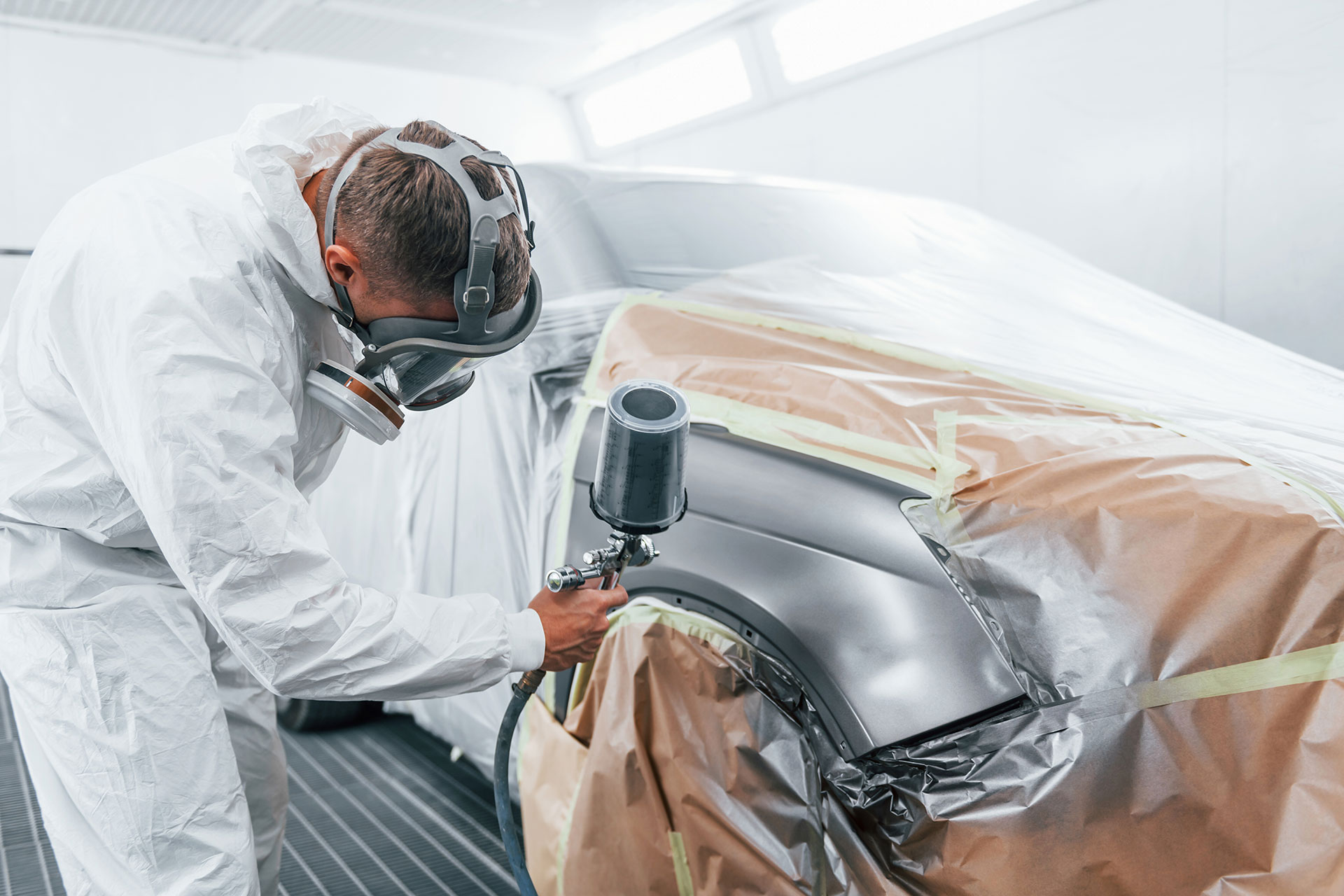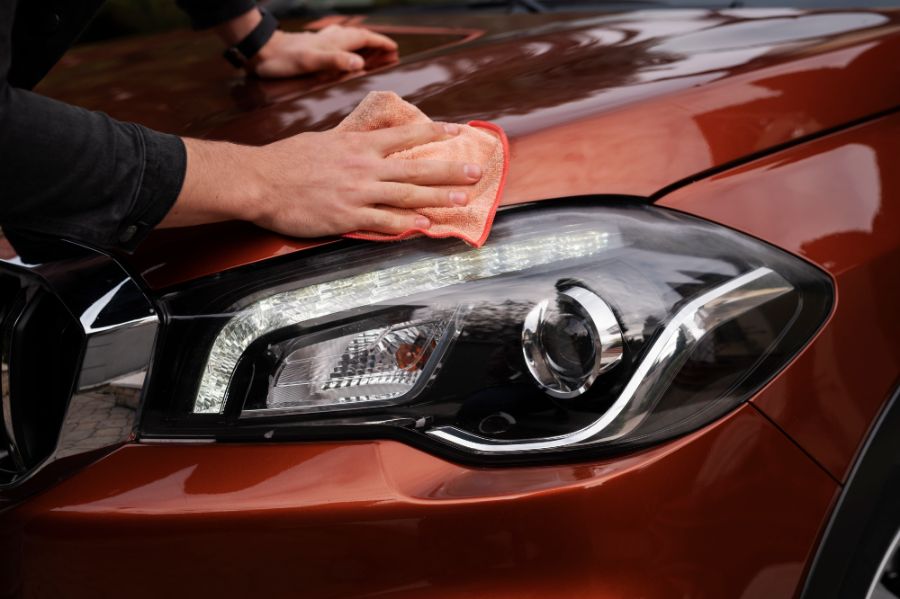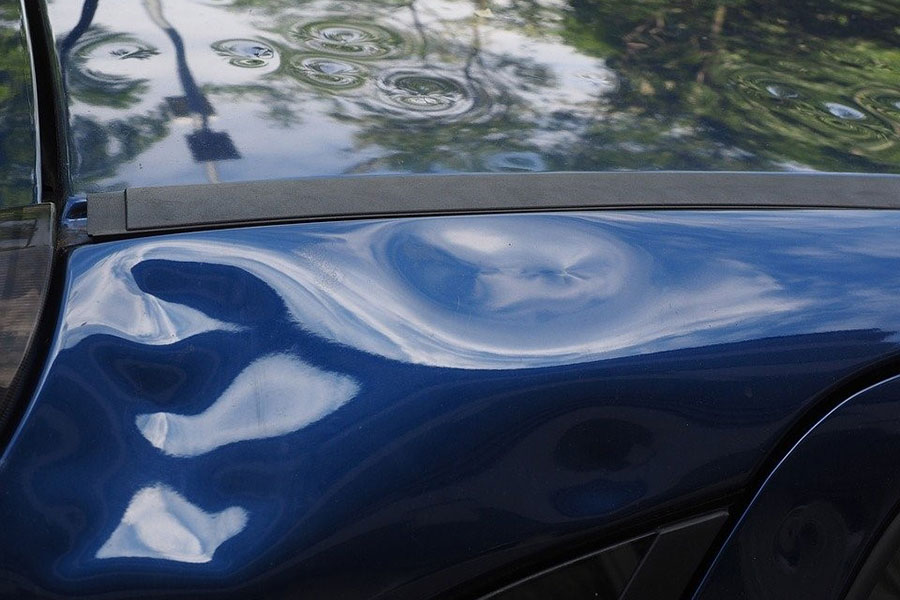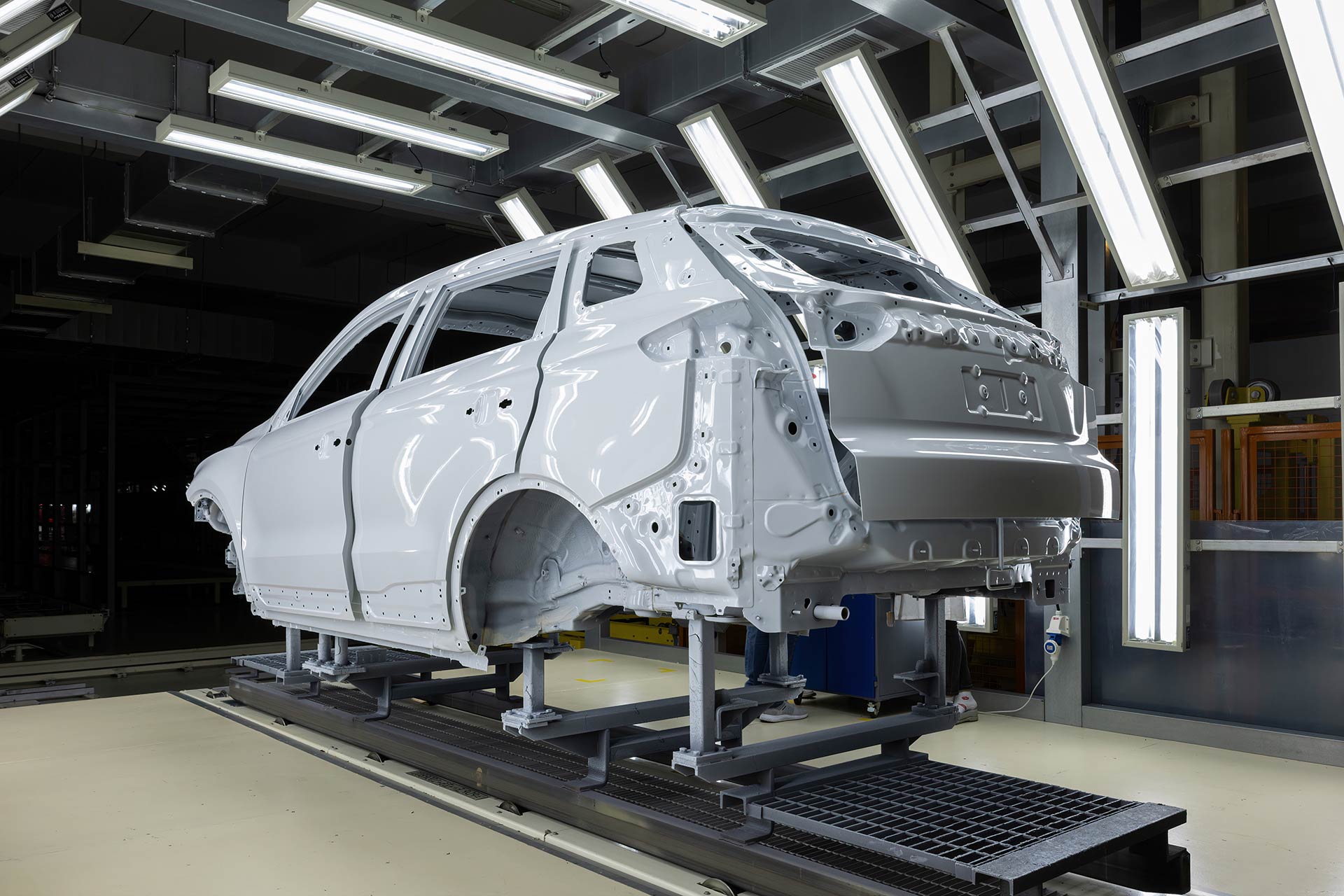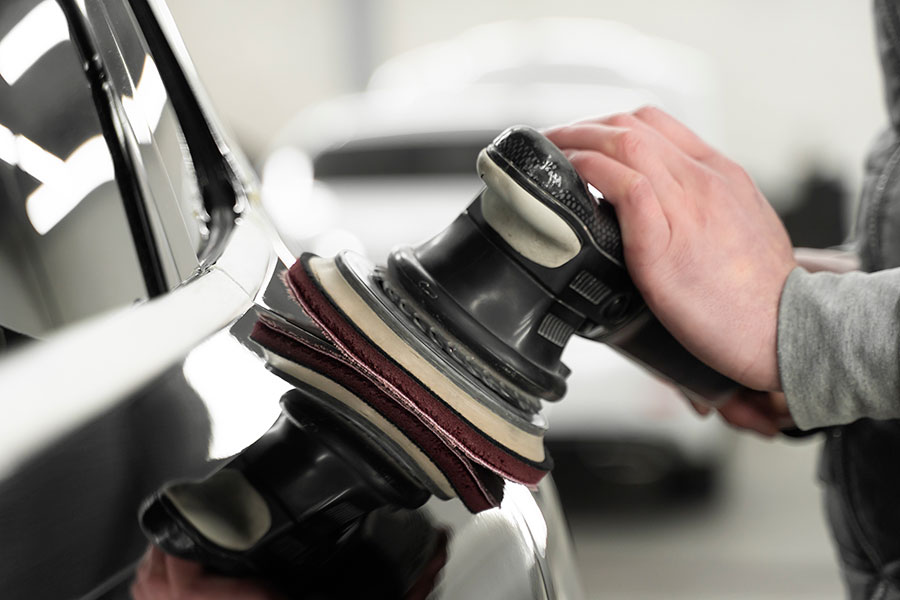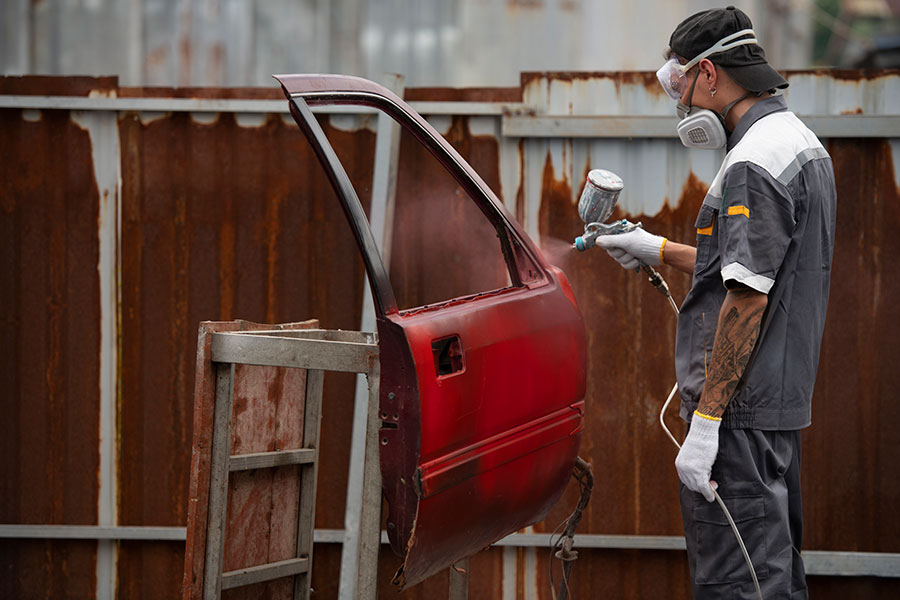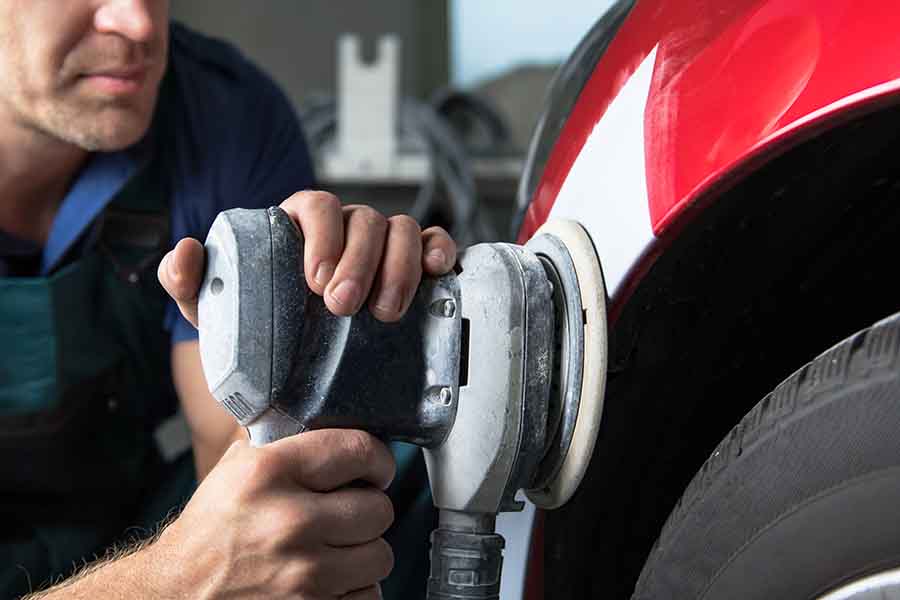80% of car repairs involve some form of paintwork, yet not all paint types are created equal when it comes to car repair. Selecting the right paint can mean the difference between a car that looks brand-new and one that looks like it's still in need of repair. With a myriad of options available, understanding the nuances of each paint type is crucial for any DIY enthusiast or professional aiming for top-notch results. From water-based paints known for their eco-friendliness to solvent-based options that offer durability and shine, making an informed choice requires a deep dive into what each paint type brings to the table. Let's explore the world of paint types for car repair, ensuring your next project not only stands out but withstands the test of time.
Understanding Car Paint Types
Acrylic Paint
Acrylic paint offers a glossy finish that many car owners love. It's easy to apply and dries quickly, making it a popular choice for DIY enthusiasts. However, its durability is not as strong as other types.
It can chip and fade over time, especially when exposed to harsh weather conditions. For classic cars or those not frequently used, acrylic might be the perfect fit. Its brilliant shine brings out the vehicle's character without the need for frequent touch-ups.
Metallic Paint
Metallic paint adds depth and shimmer to a car's appearance. It contains tiny metal flakes that reflect light, giving the vehicle a unique sparkle. This type of paint is more durable than acrylic.
It withstands weather elements better, making it suitable for daily use vehicles. However, repairing scratches can be tricky due to the metallic flakes. Matching the original color takes precision and skill. For cars that see a lot of sunlight or outdoor exposure, metallic paint is a wise choice.
Urethane Paint
Urethane paint stands out for its exceptional durability and resistance to chipping and fading. It's tougher than both acrylic and metallic paints, making it ideal for vehicles in demanding environments.
Urethane also offers a high-gloss finish that lasts for years with proper maintenance. Its flexibility makes it suitable for nearly any car model, adapting well to changes in temperature and impact. For those seeking long-term beauty and protection, urethane is the go-to option.
Choosing Wisely
The right type of paint depends on several factors, including the car's model, usage, and owner's preferences. Acrylic works well for show cars or older models needing a traditional look. Metallic suits those looking for a dynamic color shift in different lights. Urethane is best for high-traffic vehicles requiring robust protection.
Understanding each paint type's properties ensures a decision that aligns with your needs and expectations. Whether prioritizing appearance, durability, or both, there's a paint type tailored to every car's specific requirements.
Factors Influencing Paint Color Selection
Climate Impact
Climate plays a crucial role in the longevity of car paint. In areas with intense sun exposure, light-colored paints like white or silver are more resistant to fading. They reflect sunlight, keeping the car cooler and preserving the paint’s vibrancy over time.
Conversely, dark colors absorb more heat, which can lead to quicker degradation. This makes them less ideal for hot climates but suitable for cooler regions where the sun's impact is minimal.
Personal Taste
Personal preference significantly influences paint color choice. Some car owners prefer bold colors that stand out, such as bright reds or deep blues, reflecting their personality and style. Others opt for classic shades like black or gray, seeking a timeless look.
The selection process often involves balancing between what appeals to the owner and what is practical for their lifestyle. For instance, lighter colors might be chosen by those looking to minimize heat absorption or hide minor scratches more effectively.
Resale Value
When selecting a paint color, considering its impact on resale value is wise. Popular colors like white, black, and silver often have higher resale values due to their wide appeal. These colors are seen as safer choices by potential buyers, making the car easier to sell in the future.
Unique or trendy colors, while expressive and personal, may not appeal to the broader market. This can limit the pool of potential buyers, potentially affecting the car's resale price negatively.
Matching Your Car with the Right Paint
Color Matching
The process of color matching is crucial in car repairs. It ensures that the new paint blends seamlessly with your car's existing color. Specialists use a spectrophotometer, a tool that measures color precisely. They compare the car's current color against thousands in a database to find the perfect match.
Professionals then mix the selected paint formula. They often apply a test sample on a small area to ensure accuracy before proceeding with the full repair. This step is vital for achieving a flawless finish.
Professional Consultation
Seeking professional consultation is key for accurate color matching. Experts in car repair have the experience and tools necessary for this task. They understand how different factors like lighting and age can affect how paint looks on your vehicle.
A professional can also advise on the best type of paint for your car's repair needs. Whether it's acrylic, enamel, or urethane, they will recommend the most suitable option. Their guidance helps avoid mismatched colors, saving time and money.
Modern Technology
Modern technology has transformed paint matching in car repairs. Besides spectrophotometers, professionals use advanced software to fine-tune the color formula further. This technology accounts for variables such as paint fade over time, ensuring an even more accurate match.
Digital color libraries are continually updated, providing access to an extensive range of colors. This technology makes it easier to find rare or discontinued colors, benefiting classic car owners especially.
Evaluating Your Car's Color Choices
Market Trends
Market trends heavily influence car colors. They reflect current preferences and technological advancements in paint manufacturing. To assess these trends, one can look at annual reports from car manufacturers or surveys from automotive industry analysts. These sources reveal popular colors and predict future favorites.
Manufacturers often introduce new shades at auto shows. Observing these events provides insights into upcoming trends. Online forums and social media platforms are also rich sources for gauging public opinion on car colors.
Value Impact
Car color significantly affects its resale value. Classic colors like black, white, and silver often maintain higher values than more vibrant hues. This is because they appeal to a wider audience.
Research indicates that certain colors depreciate slower than others. For instance, a study found that yellow cars hold their value best. Choosing a color with a good resale value is crucial for those looking to sell their car in the future.
Timeless Colors
For long-term satisfaction, selecting a timeless color is key. Classic colors such as black, white, and gray never go out of style. They also make the car easier to sell.
However, personal preference should not be overlooked. If you have a favorite color that makes you happy, consider it too. It's important to balance personal taste with practical considerations.
Choosing Wisely
When choosing a paint color for your car repair, consider both current trends and timeless appeal. Look at what's popular now but might still be appealing in several years.
Consult with professionals who understand the nuances of automotive paint. They can provide valuable advice on which colors are easier to maintain and which may show imperfections less.
The Impact of Paint Colors on Automobiles
Visibility and Safety
Cars come in all colors, but not all are equal in visibility. Bright colors like white and yellow stand out more, especially at night. They make cars easier to see. This can reduce accidents.
Darker colors, such as black or navy blue, blend into the night. They're harder to spot. Studies show they have a higher risk of being in an accident. Choosing a bright color for your car can be a safety measure.
Psychological Effects
Colors do more than look pretty. They affect how we feel and think. Red cars grab attention. They're often seen as fast and sporty. This might make drivers of red cars drive more aggressively.
Blue cars give off a calm vibe. They might make drivers and observers feel more relaxed. The color of your car can say a lot about you. It can also change how others react to you on the road.
Maintenance Needs
Different colors need different levels of care. Light-colored cars, like white and silver, hide dust well. But they show mud and dirt easily.
Dark colors, especially black, need more frequent washing. They show water spots and dust clearly. Yet, scratches are less visible on them compared to light colors.
Metallic paints look great but can be hard to match if repairs are needed. They might need more work to keep the color consistent after a repair.
Personalizing with the Ideal Paint Color
Unique Finishes
Choosing the right finish can transform a car, making it stand out. Matte, glossy, and metallic are popular choices, each offering a distinct look.
Matte finishes provide a modern and sophisticated appearance. They require special care to maintain their unique texture. Glossy finishes, on the other hand, offer a classic shine that enhances the car's curves. They are easier to clean but show imperfections more readily. Metallic paints add depth and sparkle under sunlight, giving the car a luxurious feel. However, they can be more expensive and challenging to match in case of repairs.
Expressing Individuality
Personalizing your car with a unique paint color is a powerful way to express individuality. It reflects personality and preferences, making your vehicle truly yours.
Custom paint jobs allow for endless creativity. From vibrant colors that stand out to subtle hues that reflect elegance, the choice is yours. Special effects like pearlescent or iridescent finishes can also add an exclusive touch. Choosing a color that resonates with you ensures that your car represents your style and character.
Practical Considerations
While personalization is exciting, practical considerations are crucial. The right color choice should balance personal taste with longevity and maintenance.
Darker colors tend to hide dirt better but might show scratches more easily. Lighter colors may require more frequent cleaning but can help mask minor damage. It's also important to consider the resale value of your car; unusual colors might not appeal to everyone. Finally, budget plays a role. Custom colors and finishes can be costly, so it's vital to weigh the benefits against the expense.
Popular Automotive Colors and Trends
Current Favorites
Car enthusiasts often choose colors that reflect their personality and style. Recently, neutral tones have dominated the market.
Silver, black, and white remain top choices for many drivers. These colors are popular for their ability to hide dirt and minor scratches. They also tend to have better resale values.
Gray has seen a rise in popularity. It offers a modern look that appeals to those seeking a sophisticated appearance without the starkness of black or white.
Future Predictions
Trends suggest a shift towards more vibrant and unique colors. Bright blues, deep greens, and bold reds are gaining traction. This change mirrors a growing desire among consumers to stand out and express individuality through their vehicles.
Electric cars are leading this colorful revolution. Manufacturers like Tesla and Nissan are introducing these hues to appeal to a younger, more environmentally conscious demographic.
Technology's Role
Advancements in paint technology allow for more complex and lasting colors. Pearlescent and metallic finishes are becoming standard options, offering depth and iridescence that were once exclusive to high-end models.
Digital color matching tools enable manufacturers to create custom shades faster. This technology ensures a perfect match during repairs, maintaining the car's aesthetic appeal.
Cultural Influence
Cultural trends heavily influence color preferences. Social media platforms showcase global trends, making certain colors more desirable. For instance, pastel shades have gained popularity in Asia, influencing markets worldwide.
Sustainability concerns are also shaping choices. More consumers prefer eco-friendly paints, including water-based options that reduce harmful emissions.
Manufacturer Response
Automakers are responding to these shifts by expanding their color palettes. Limited edition models often feature exclusive colors, adding to their appeal and uniqueness.
Manufacturers collaborate with color experts annually to predict future trends. This proactive approach helps them stay ahead of consumer preferences and offer appealing options each model year.
Choosing Automotive Paint Wisely
Quality Materials
Selecting the right paint for car repair isn't just about the color. It's crucial to focus on quality materials that ensure longevity and a flawless finish. High-quality automotive paints resist fading, chipping, and weather damage better than lower-grade options.
It's wise to choose paints known for their durability. These often include urethane-based products, which offer a tough, long-lasting surface. They're more resistant to scratches and UV light, keeping your car looking newer for longer.
Cost Considerations
The price of automotive paint can vary widely, influenced by factors such as type, color, and brand. Metallic and pearlescent colors often carry a higher price tag due to their complex formulations and the added depth they provide.
While it might be tempting to opt for cheaper options, remember that the cost of repainting could increase if the paint doesn't last. Investing in high-quality paint from the start can save money in the long run by reducing the need for frequent touch-ups or repaints.
Professional Application
For the best results, having your car painted by professionals is essential. They have the tools, skills, and experience needed to apply paint evenly and smoothly, ensuring a stunning finish.
Professionals also know how to properly prepare your car's surface for painting, which is critical for adhesion and longevity. Skipping this step or doing it incorrectly can lead to peeling or bubbling paint down the line.
Color Trends
Though not directly impacting durability or application quality, choosing a color that aligns with current automotive trends can enhance your vehicle's resale value. Popular colors like black, white, and gray are timeless choices that appeal to a wide audience.
However, opting for a unique or trendy color can make your vehicle stand out. Just remember that some colors may cost more due to their rarity or complexity in mixing.
Painting Cars, Modern vs Classic Approaches
Traditional Techniques
Traditional car painting involved layers of manually mixed paints and hand-sprayed applications. These methods required skilled craftsmen with a deep understanding of materials. They often used single-stage paint, where color and protective coating were combined.
This approach gave each car a unique touch but was time-consuming. It also led to variations in color and finish from one vehicle to another. The charm of these classic techniques is undeniable, bringing a nostalgic value to vintage cars.
Modern Methods
Modern car painting has embraced technology for precision and efficiency. Paints now have multiple layers, including base coats for color and clear coats for protection. This ensures a uniform appearance across all vehicles.
Computerized color matching and high-volume, low-pressure spray guns achieve consistent results faster. These advancements not only speed up the process but also reduce material waste. Modern paints are more durable, resisting chips and fading for longer periods.
Environmental Impact
Modern paint formulas have evolved to be more environmentally friendly. Water-based paints reduce volatile organic compound (VOC) emissions, which are harmful to both the environment and human health.
Manufacturers have also developed recycling systems for overspray, further minimizing waste. These innovations reflect a growing commitment to sustainability within the automotive industry.
Classic Resurgence
Despite the dominance of modern techniques, there's a resurgence in demand for classic colors and styles. Car enthusiasts are seeking out vintage hues and finishes that evoke the golden age of automotive design.
Manufacturers are responding by reintroducing retro colors with modern formulations. This blend of old and new allows for the celebration of automotive history while benefiting from today's technological advances.
Summary
Choosing the right paint for your car repair is more than picking a color; it's about matching your personality with your ride and keeping up with trends while considering durability. We've walked you through everything from understanding different paint types to selecting the perfect shade that reflects your style and meets your car's needs. With insights on the impact of colors and how to navigate modern versus classic painting approaches, you're now equipped to make informed decisions that enhance your car's appearance and value.
Don't let the array of options overwhelm you. Take what you've learned here to select a paint that not only looks great but also protects and preserves your vehicle for years to come. Ready to revamp your ride? Dive into the world of automotive paints and turn heads with your choice. Your car is an extension of you—make it count.
Frequently Asked Questions
What are the main types of paint used in car repair?
There are primarily three types of paint used in car repairs: urethane, acrylic, and lacquer. Each type offers different benefits in terms of durability, finish, and application methods.
How do I choose the right paint color for my car?
Choosing the right paint color involves considering the original color, vehicle model, and personal preferences. It's essential to match the paint code found on your car's identification plate for an exact match.
Can changing the paint color impact my car's value?
Yes, changing the paint color can impact your car's resale value. Classic or neutral colors tend to maintain value better than more unconventional choices.
Is it possible to personalize my car with custom paint colors?
Absolutely! Personalizing your car with custom paint colors is a popular way to make your vehicle stand out. However, it's important to choose high-quality paints and professional application for the best results.
What are some popular automotive paint colors and trends?
Popular automotive paint colors often include black, white, gray, and silver. Trends can vary, but recently there's been an increase in matte finishes and bold, vibrant colors.
How do modern painting techniques differ from classic approaches?
Modern painting techniques often involve advanced technologies like waterborne paints and computerized color matching systems for a more eco-friendly approach and precise color replication, unlike classic methods that relied heavily on solvent-based paints and manual mixing.
What should I consider when choosing automotive paint?
When choosing automotive paint, consider factors like durability, finish type (matte, gloss, satin), color matching with your current paint, and environmental impact. Opting for high-quality paints from reputable manufacturers is also crucial.
